Just short of 30,000 people roared as Croatia’s biggest football club Dinamo Zagreb hosted Benfica at the Maksimir stadium. They erupted as their underdogs snatched a 1-0 victory over their guests in the first round of the Europa League’s knockout stages.
It was truly a night to remember for a number of things but the performance of Dinamo is definitely the highlight of the evening as the Croatian titans edged even closer to a long-awaited European success. For them, that is far from winning this coveted tournament; it is more about finally leaving a positive mark outside of their domestic league.
This tactical analysis will use statistics to determine how a well-organised Dinamo Zagreb team managed to take advantage of a somewhat inexperienced and rotational Benfica lineup to secure both a clean sheet and a crucial victory before the trip to Portugal.
Lineups
Dinamo Zagreb (4-1-4-1)
Starting XI: Livaković – Stojanović, Theophile-Catherine, Dilaver, Leovac – Šunjić – Gojak, Oršić, Olmo, Kadzior – Petković
Bench: Atienwen, Gavranović, Moro, Perić, Rrahmani, Šitum, Zagorac
Coach: Nenad Bjelica
Benfica (4-4-2)
Starting XI: Vlachodimos – Ferro, Dias, Grimaldo, Corchia – Gabriel, Luís, Krovinović, Fernandes – Seferović, Joao Félix
Bench: Samaris, Ribeiro, Svilar, Filipe, Cervi, Silva, Živković
Coach: Bruno Lage
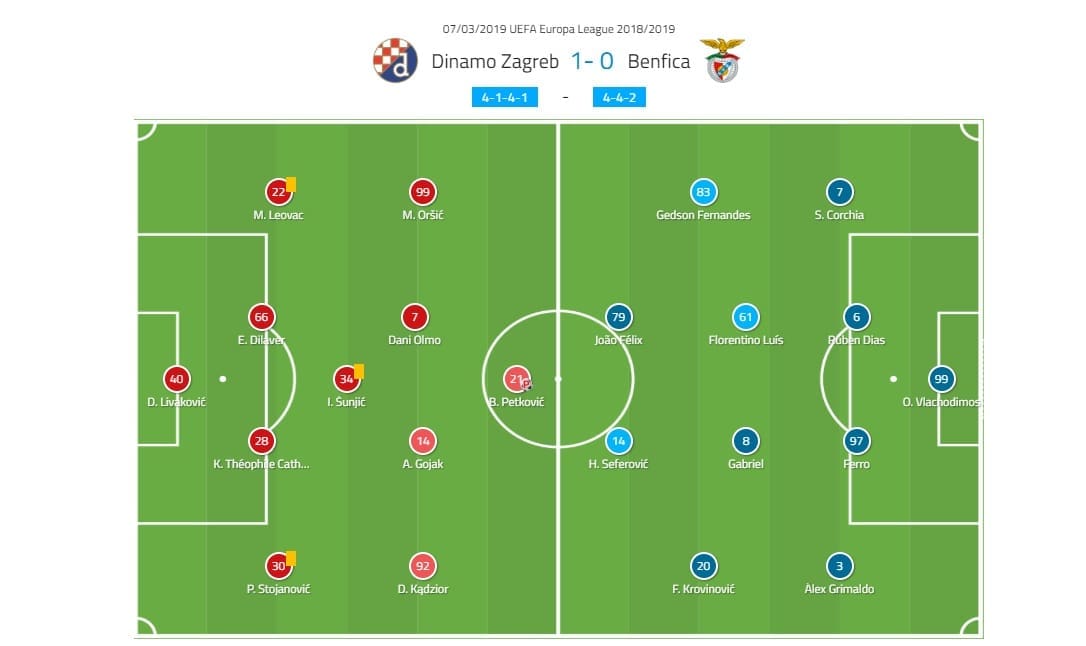
Dinamo Zagreb setup
Nenad Bjelica did not have to think long nor hard in order to create what seemed to be the strongest possible starting XI Dinamo Zagreb could muster for this game. Two big names missing from his team sheet were Izet Hajrović and the team captain, Arijan Ademi, the former still serving his suspension and the latter suffering from an injury. Other than those two, the Blues had little to surprise us with.
Dominik Livaković was the man between the sticks with the captain’s armband, and in front of him stood the expected quartet of Petar Stojanović, Kevin Theophile-Catherine, Emir Dilaver and Marin Leovac. The middle of the park was where Bjelica was forced to shuffle the deck a bit.
Ivan Šunjić and Damian Kadzior were the names chosen to fill the voids of Ademi and Hajrović. Šunjić was deployed in a pivot-like position, right behind four midfielders consisting of Mislav Oršić on the left, Damian Kadzior on the right, and Dani Olmo and Amer Gojak in the middle, right behind the lone striker Bruno Petković.
Dinamo Zagreb adopted a 4-1-4-1 formation. It is their favourite one, as the Blues have used it in 34% of all games played.
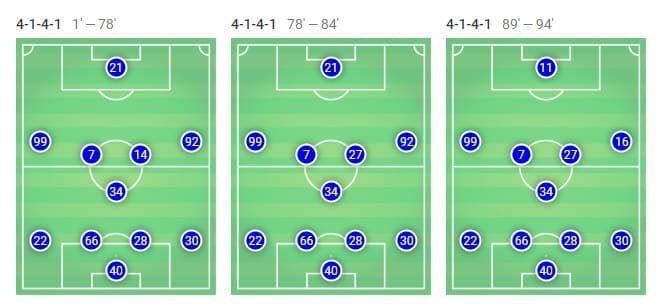
Benfica setup
As expected, Bruno Lage decided to field a rather young and rotational squad to face a team that still should have been beatable on paper. With most of his focus still on the domestic league, a total of five youngsters from Benfica’s academy got a chance to participate in a big Europa League night.
Odisseas Vlachimodos was in goal, while Grimaldo, Ruben Dias, Ferro and Sebastien Corchia formed the back four. The latter at right-back was the only difference from the game against Porto.
Croat Filip Krovinović was the wide man on the left as opposed to Rafa Silva who was on the bench, and alongside him were Gabriel Pires, Florentino Luis and Gedson Fernandes. Up front, the tandem of Joao Felix and Haris Seferović led the charge of the Portuguese team.
Benfica played in their standard 4-4-2 formation at the beginning of the game but transitioned to a 4-2-3-1 right before the half-time whistle and remained in that system until the match came to its conclusion.
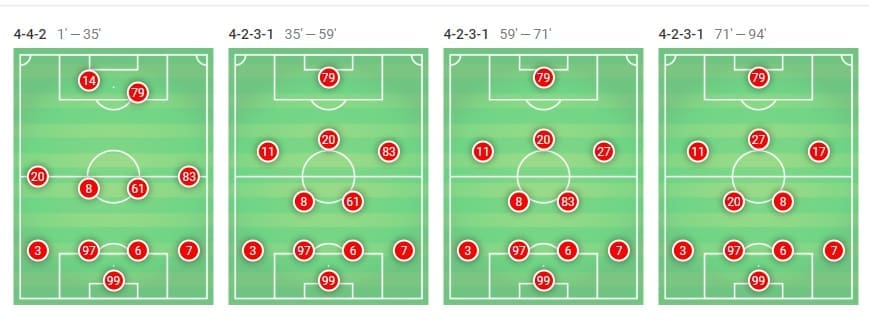
Benfica take the reigns at the start
It’s not easy going into a game as the underdog, expected by everyone to lay down and somehow weather the storm. Dinamo Zagreb were in that exact position but the hopes of the team from the capital were as high as possible, and it could be seen on the pitch.
The hosts usually don’t boast a high percentage of possession as their average this season is 52.33% so it was mostly expected that they would yield the ball to Benfica and try to stay as compact and as secure as possible. The Croatian team’s 36.67% possession is proof enough of that thesis as the Portuguese squad had most of the ball but failed to create anything threatening.
Still, in the opening minutes of the game, the away team established dominance and actually created their most promising chances. In the attacking phase, Benfica use a distinctive system that sees them push their full-backs high up the pitch, and use them to stretch the opposition.
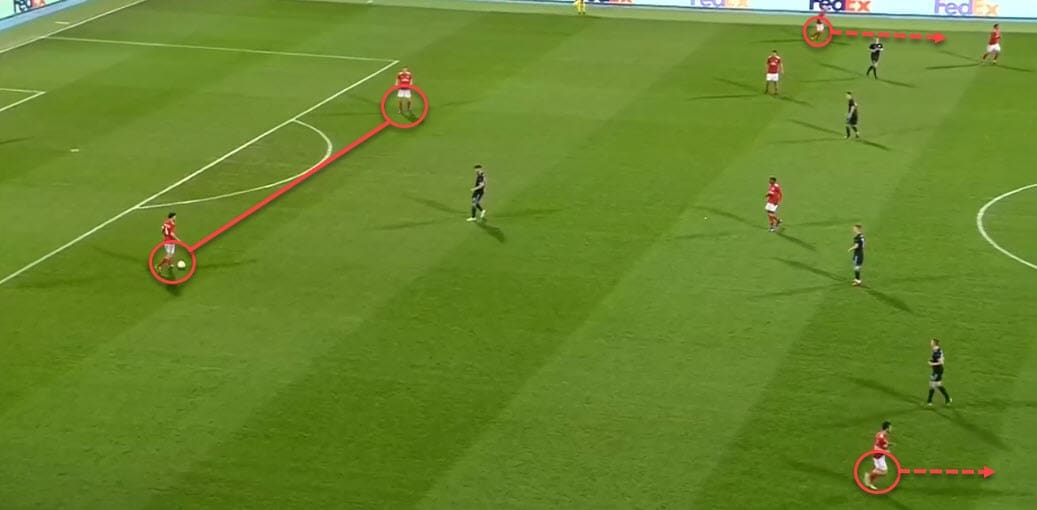
In this scenario, the build-up starts with the centre-back pairing while both full-backs assume their high position and start moving forward. Offensively, that’s Benfica’s biggest strength alongside technical prowess that their individuals have with the ball at their feet.
As soon as both Grimaldo and Corchia got into position, both wingers, Krovinović and Fernandes in this case, tucked inside and let the defenders overlap. They charged into free space to create width, and as mentioned above, to stretch the opposition’s back line.
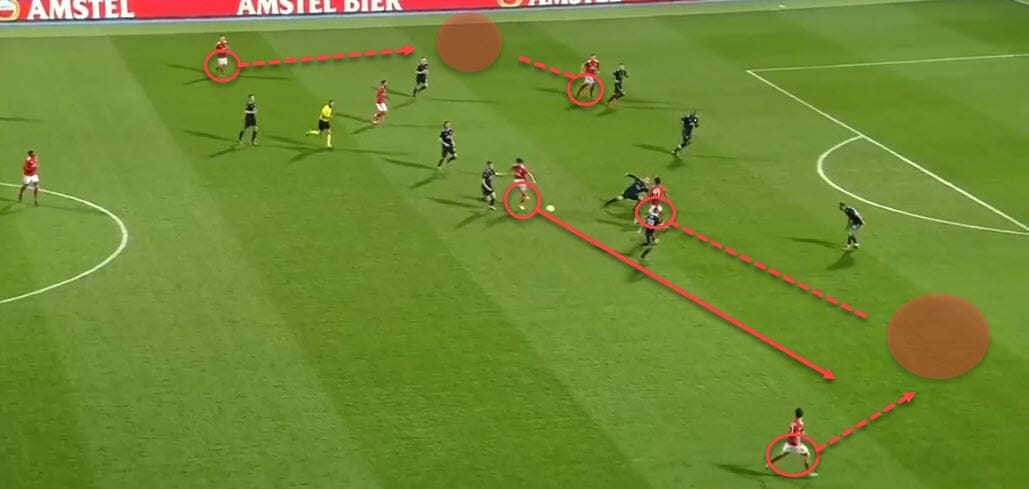
Usually, the Portuguese team prefer the left side to attack, while their right isn’t used as an offensive outlet as much. The difference is the young Spaniard, Grimaldo, a La Masia student that was snatched away by Benfica. The defender is at the core of his team’s build-up as he uses his speed and accuracy to set up plays.
But just as he was important to get that edge in attacking duels, Benfica’s own Croat, Filip Krovinović, was also instrumental in finding ways for Lage’s troops to enter the final third. Notice how Krovinović drops deeper to receive the ball, but is unable to due to man-marking. His intention is to simply create a different passing option or to occupy a defender, making a numerical superiority in the transition to the box.
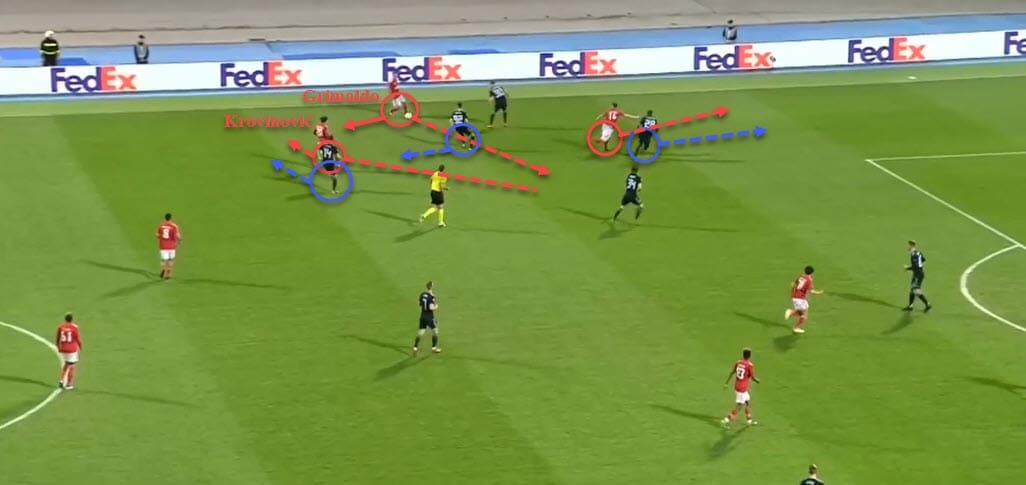
This was crucial at the beginning of the game when Dinamo Zagreb were not yet ready to deal with that combination. Krovinović dropped deeper, pulling away one or ideally two markers and making space for Grimaldo to either overlap, or in this case underlap, depending on the situation and make progress into the final third.
Felix and Seferović also play a part. The former provides a subtle touch to send Grimaldo one-on-one against Livaković, while the latter pulls away Theophile-Catherine. Luckily for Dinamo, the young keeper comes out on top and saves the Blues from an early deficit.
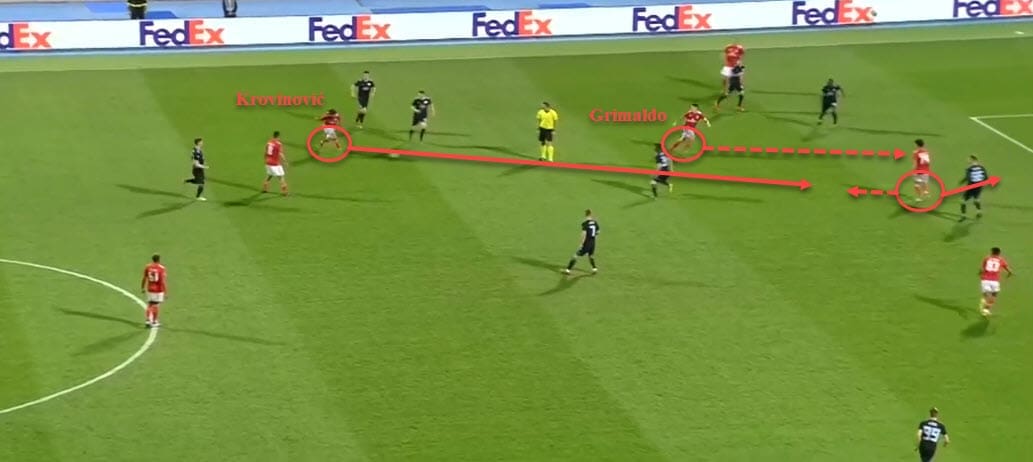
For the majority of the opening minutes, Dinamo just couldn’t handle the overloads Benfica were creating in the middle of the park. Both of their strikers would regularly make a difference, and add extra men to mark, causing all sorts of problems for the hosts.
As soon as that was done, Grimaldo would be free to operate to his heart’s content down that left flank. Dinamo, however, noticed the pattern repeating and made sure to stop it before it turned into palpable results.
Dinamo show maturity on the pitch
The Portuguese team were adamant in their press for two main reasons: Dinamo had an obvious target man up front in the form of Bruno Petković, and a goalkeeper who is excellent with his feet in Dominik Livaković. Benfica did their homework and they knew that the latter would constantly try to find the former with pinpoint accurate long balls in behind the defensive line or as the forward dropped deeper to receive the pass.
By putting numbers right in Dinamo’s face and forcing them back, Benfica made sure Livaković would never be free to distribute the ball with enough time and space. The young goalkeeper made a total of five distributions but only nine of his 15 long passes (60%) were able to successfully hit the target.
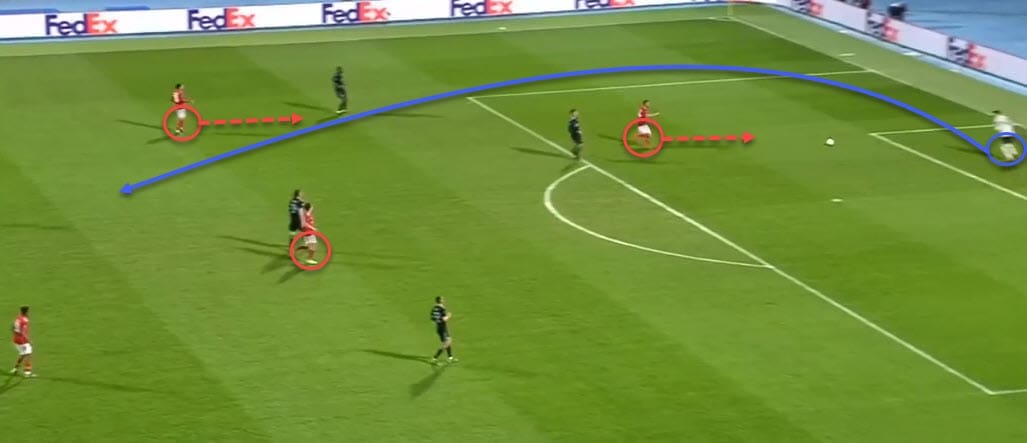
But the away team couldn’t maintain their dominance, at least not in such a way that it would give them a distinct advantage over their hosts. Part of that was surely down to simply not being as used to playing with each other and not having much experience to begin with, but mostly it was due to Dinamo’s exquisite defending.
Bjelica’s team managed to adapt mid-game. They successfully recognised Benfica’s left side as the more dangerous one, and as such, it started getting more attention by the blue shirts.
The first change that was made was the transition to a more compact defensive shape. When out of possession, which was most of the time, Dinamo would withdraw to a 5-3-2 formation that would occasionally turn into a 5-4-1 with Petković being the only player higher up the pitch.
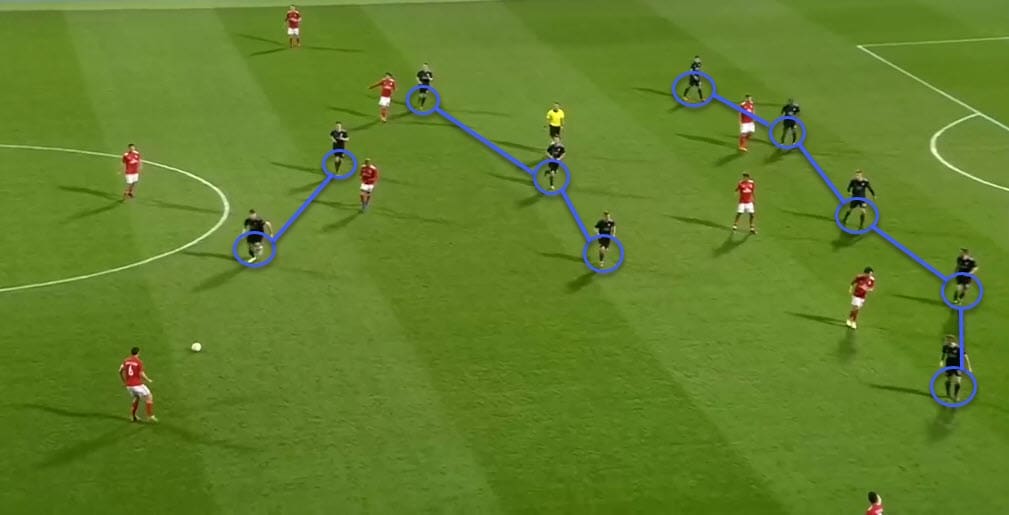
This worked because it shut down all of Benfica’s chances to send passes between the lines, and it also enabled Dinamo to stay wide and prevent the overlaps. As soon as the away team was forced backwards, the blue shirts were following, starting with the forward and then supported by the midfield quartet.
They did not press often, but when they did they pressed extremely well, as can be seen in the image below when they forced the Portuguese team into a mistake.
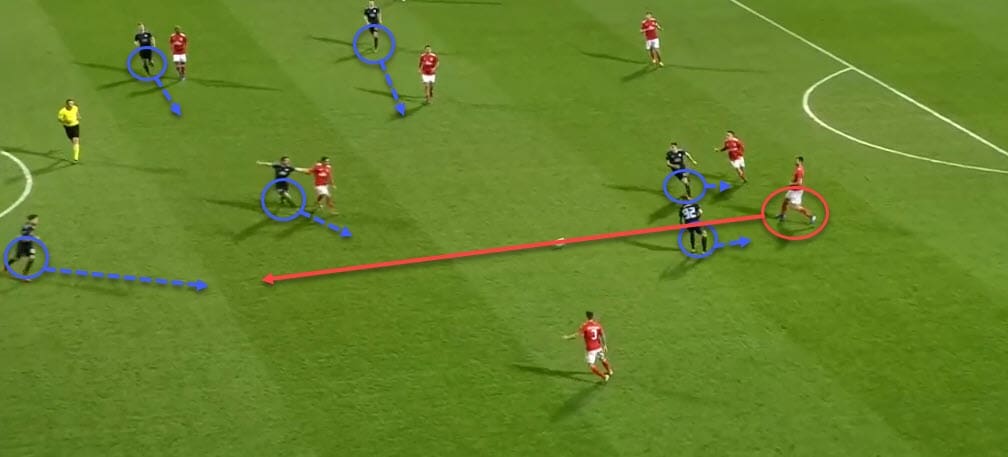
The press worked well because Dinamo Zagreb closed all possible passing channels, forcing Benfica into a riskier approach. This would occasionally result in misplaced passes. The away team racked up a total of 130 losses of possession, 36 happening in the middle of the park, 20 in defence, and 74 in the final third.
Apart from simply applying the high press, Dinamo also started putting numerous markers on the ball-carriers who would collapse immediately upon the opponent receiving the ball.
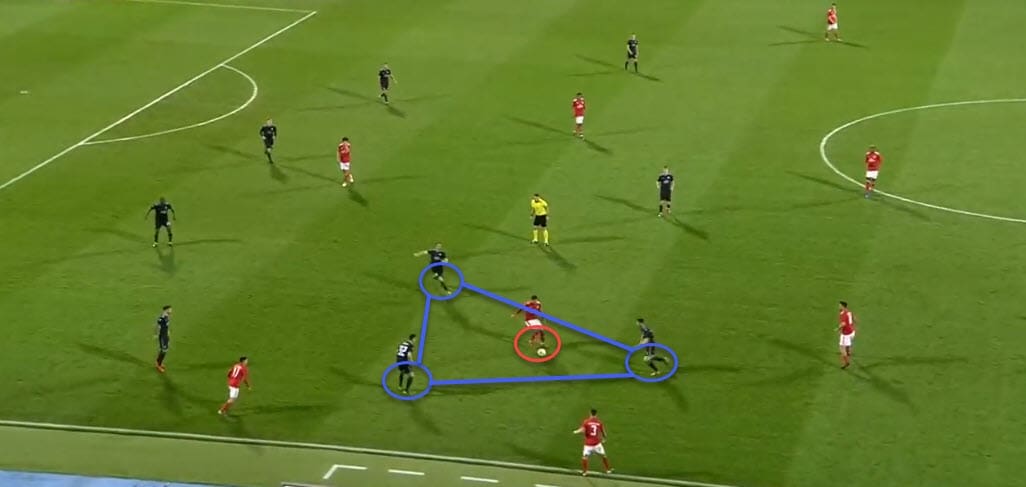
Notice how a three-man squad practically roams the field and hunts for the ball. Even though Benfica manage to slither away from the first attempt, Dinamo continue applying pressure. When Petković drops to assist them as well, the Blues finally manage to get the ball in a promising situation that leads to a dangerous attack.
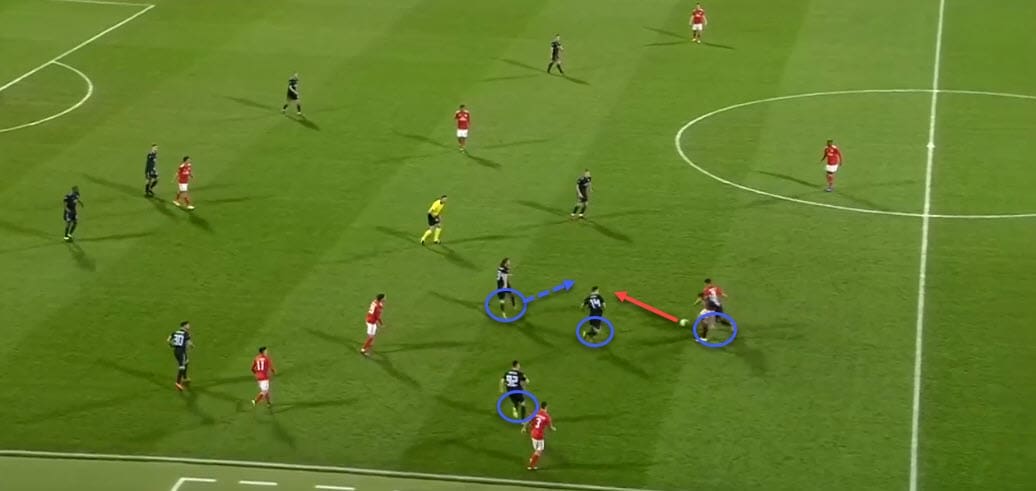
But what was probably the single most important aspect of Dinamo Zagreb’s successful defence was the shutting down of the left flank where Grimaldo operated. Just as Benfica were creating numerical superiority and overcrowding Dinamo in order to get past their back line, Dinamo started doing a similar thing to counter it.
Suddenly, there were more and more blue shirts piling up on that left flank, either forcing the guests backwards or to the right side.
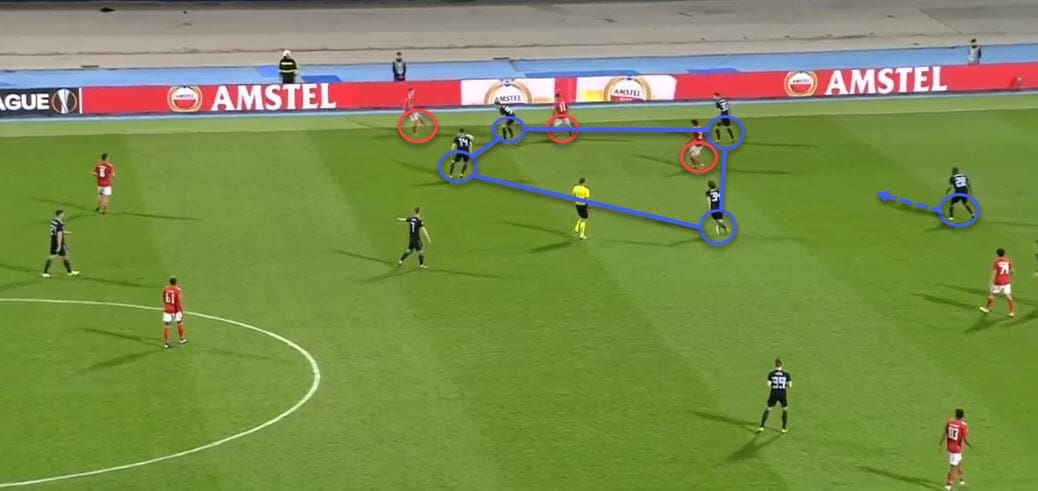
A simple tactical switch meant that Benfica could no longer move freely with Grimaldo and Krovinović so they had to find other ways to penetrate Dinamo Zagreb’s block. The only viable solution was to switch the play onto the right side, as can be seen from the graphs below.
Benfica’s 44% of attacks on the right (blue) is quite surprising considering they are more threatening on the opposite flank with Grimaldo at the helm. Still, this only further proves how Dinamo managed to adapt and overcome their opposition.

Individuals shine but team effort pulls through
There were a couple of key players in Dinamo Zagreb’s squad that pulled the team to victory. The forward, Bruno Petković, probably takes the cake as he was one of the most instrumental pieces in Bjelica’s puzzle.
Not only did the Croat complete all four of his dribbles and make eight recoveries (five in the opposition’s half), but he also scored the winning goal and made four interceptions for his team. The number of interceptions is flattering but not really surprising.
Petković is a modern striker, meaning that he is prolific in front of goal but also crucial in build-up play, as was demonstrated against Benfica at the Maksimir stadium.
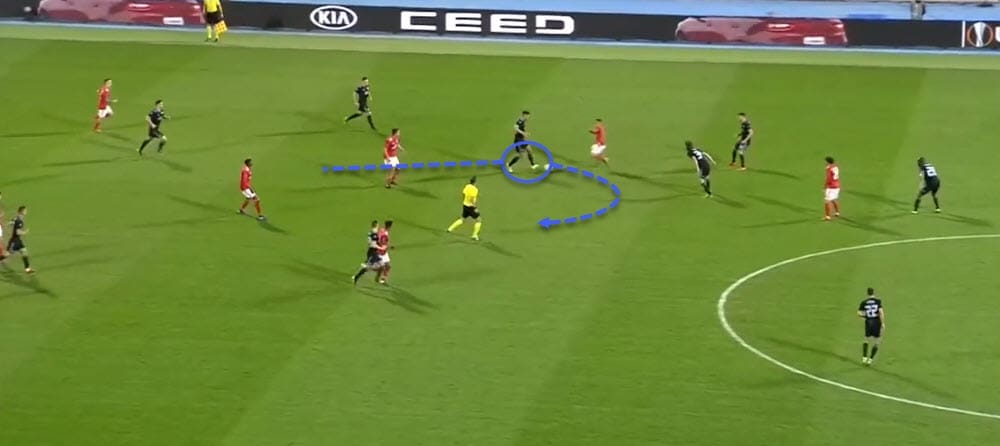
Here, Petković drops from his zone deeper into the midfield, intercepts the ball, and makes a swift turn to move it back into the final third. After some lovely skill to beat his marker, Petković proceeds to send a fantastic through-ball to set up Gojak in a one-on-one with Benfica’s goalkeeper.
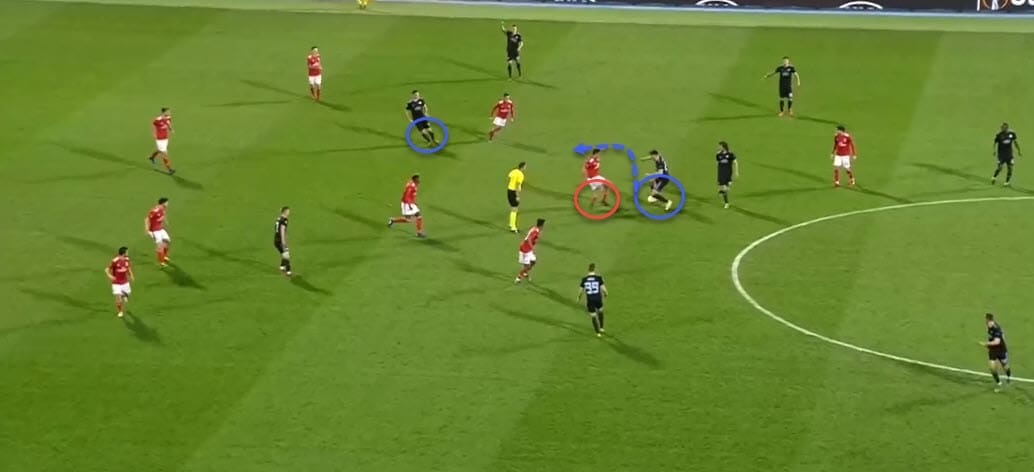
Unfortunately, Gojak misses a golden opportunity to make it 2-0 on the stroke of halftime. Luckily for Dinamo Zagreb, Petković’s goal from the spot in the 38th minute was enough to seal the deal and to give the home team a small edge before the second leg.
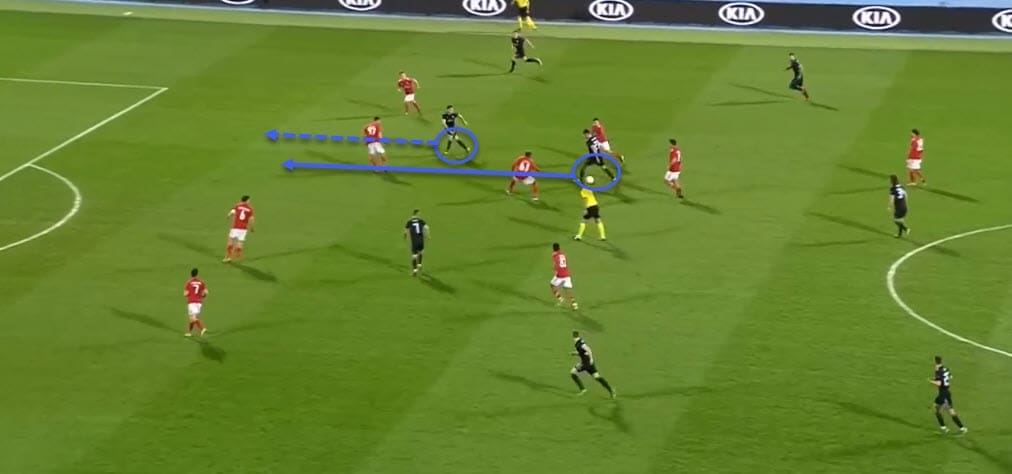
The attacking phase of Dinamo’s play did revolve around Petković a lot, as it should have, but they successfully utilised the connection between their thirds to make progress across the pitch.
It all started with Livaković between the sticks, who would find his forwards with accurate long balls. The dialogue between them and the midfield was good enough so that Dinamo would manage to threaten through a couple of one-twos and fancy footwork.
But a lot of it was, as was mentioned earlier, due to Benfica’s troubles in maintaining possession in the face of the high press, which resulted in a lot of lost balls. After the goal to give them the advantage, Dinamo did slow down the tempo just enough to secure the victory.
Benfica, for all of their possessional superiority, couldn’t manage any palpable chances. They were thus left with nothing but crumbs for their way back home to Portugal.

Dinamo’s defence was compact enough, but with the right dose of individual brilliance from Theophile-Catherine and Dilaver respectively to nullify all of Benfica’s chances and bring them, and the whole of Croatia, an outstanding victory.
The French defender made five clearances, won 75% of his defensive duels (3/4) and made 11 recoveries while Dilaver made two clearances, eight interceptions and 10 recoveries. Both were outstanding on the night.
Conclusion
It would be easy to conclude that Benfica underestimated Dinamo Zagreb, but the choice to rotate and give young players a chance in such a big match is somewhat understandable when you have a domestic league trophy to chase. Bruno Lage is still a fresh coach and is still getting to grips of his talented troops.
That being said, Dinamo Zagreb had an exceptional game. They showed maturity, organisation and the ability to adapt to the opposition, all of which are key if they want to succeed in Europe.
Even with this victory in Zagreb, Dinamo are still not favourites to go through as Benfica will most likely field their best lineup for the second leg back in Portugal. The question remains whether they will be able to breach Dinamo’s well-structured defence even though they did not even come close to it in the first leg.
And even if they do manage it, can they prevent the Blues from scoring an away goal? A lot of questions remained to be answered as we nervously await the rematch, which is just around the corner.
If you love tactical analysis, then you’ll love the digital magazines from totalfootballanalysis.com – a guaranteed 100+ pages of pure tactical analysis covering topics from the Premier League, Serie A, La Liga, Bundesliga and many, many more. Pre-order your copy of the March issue for just ₤4.99 here, or even better sign up for a ₤50 annual membership (12 monthly issues plus the annual review) right here.

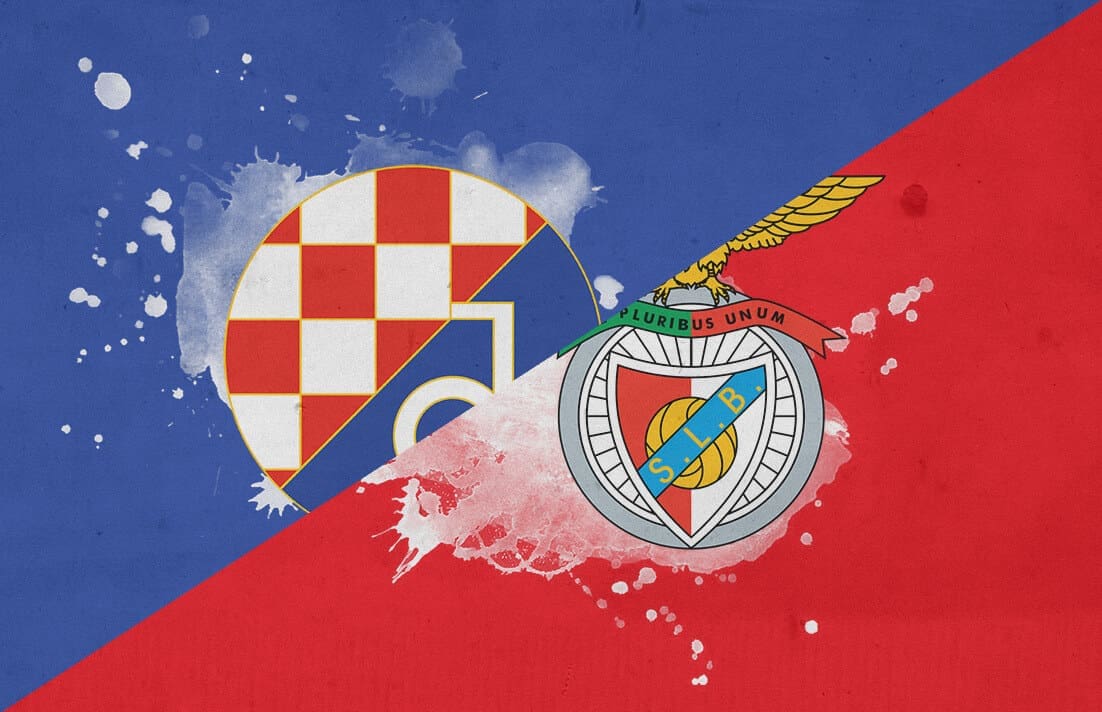




Comments